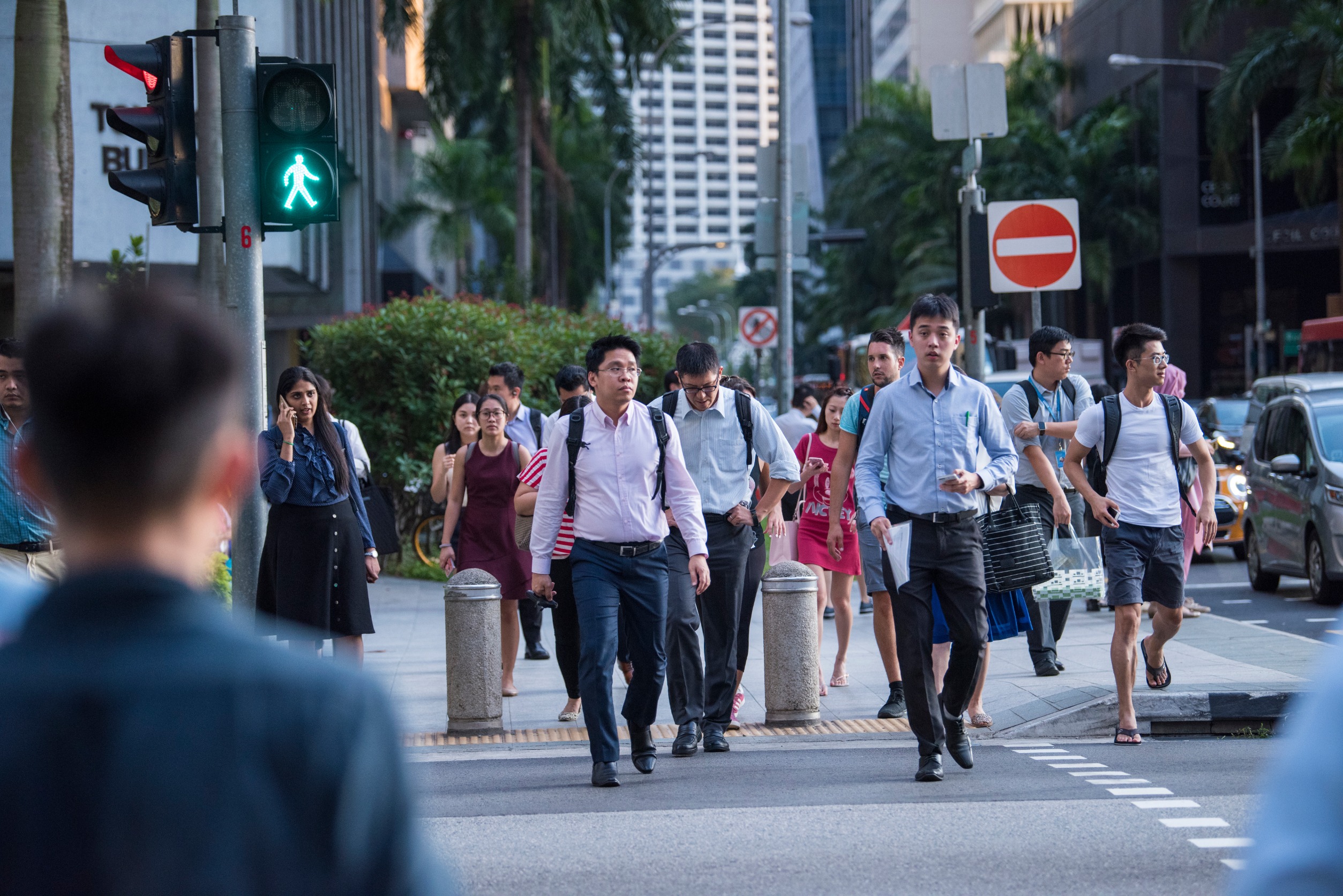
Artificial intelligence (AI) technologies rapidly transform Singapore’s economy, unlocking new opportunities and driving innovation. As the city-state grapples with limited manpower, AI solutions enhance its manufacturing output, optimize customs facilitation, and create new job opportunities. However, while many Singaporeans stand poised to benefit from AI advancements, low-wage migrant workers are at risk of job displacement. This article explores the potential consequences of AI adoption and the urgent need for inclusive policies protecting all Singapore workers.
The Complex Workforce Landscape
Singapore’s economy relies heavily on migrant workers, particularly those from South and Southeast Asia. In 2019, the city-state hosted around 1.4 million foreign workers, with nearly 999,000 categorized as low-wage work permit holders. These workers fill critical roles in sectors like construction, manufacturing, shipping, and domestic services—jobs often regarded as undesirable by resident Singaporeans. Therefore, the migrant workforce is essential in maintaining the city’s economic stability.
Moreover, this dynamic allows Singapore to maintain a steady unemployment rate while adjusting labor demands. Migrant workers enter when the economy requires additional support and leave during downturns. This cyclical pattern, however, exposes them to precarious living conditions, especially during crises. The Covid-19 pandemic starkly highlighted the fragile nature of this workforce. With border closures and rising xenophobia, nearly 181,500 foreign workers lost their jobs, marking a significant increase in unemployment among this group compared to previous financial crises.
Adapting To The Change Of AI
As Singapore endeavors to become a global leader in AI, it must proactively support its workforce through reskilling initiatives. The SkillsFuture Initiative, launched in 2015, has provided Singaporean citizens and residents over the age of 25 with subsidized access to diverse training courses. In 2023 alone, the initiative engaged about 520,000 individuals in upskilling programs. This remarkable uptake showcases the determination to prepare for a future increasingly influenced by artificial intelligence.
Despite these efforts, crucial gaps remain. Notably, migrant workers currently face exclusion from many upskilling initiatives. Unfortunately, this oversight contradicts Singapore’s expressed commitment to inclusivity. Many migrant workers already struggle to manage significant debt stemming from basic training and certification fees necessary for employment in Singapore, which increases the burden of acquiring additional skills.

The Urgent Need for Regulation
The unchecked proliferation of AI risks exacerbating socioeconomic divides within Singapore and the broader Southeast Asian region. Authorities must critically assess their responsibilities regarding the transnational division of labor and the implications of adoption. Key elements of these discussions should include the challenges faced by low-wage workers who could become even more vulnerable in this evolving landscape.
Rowing against this backdrop, Singapore faces pressure to address labor migration issues comprehensively. A staggering portion of the economic burden may fall back on source countries when jobless migrant workers return home, worsening unemployment and social issues. While experience gained in Singapore may afford some former migrants advantages upon returning, this often displaces individuals who lack access to similar opportunities, perpetuating inequality.
Addressing the Socioeconomic Divide
To navigate these challenges, Singapore must adopt a multifaceted approach. First, the city-state should shift its sociocultural narrative surrounding low-wage workers.
Automation has fundamentally altered productivity metrics, prompting a reevaluation of how society perceives individual economic contributions. Notably, one in five migrant workers serves as foreign domestic workers, providing invaluable care services despite receiving little acknowledgment or compensation.
Furthermore, the terminology surrounding “low-skilled” jobs fails to capture the significant social contributions of these workers. This preoccupation with categorizing jobs according to skill obscures the inherent value found within various roles essential for maintaining society—ranging from hawker culture to domestic care. Reevaluating these classifications can foster a positive societal relationship with both labor and AI advancements.
Safeguarding Workers’ Rights
In addition to addressing sociocultural aspects, safeguarding workers’ rights must remain paramount. Advocates suggest implementing a buffer period for displaced migrants, affording them time to seek new job opportunities prior to facing potential deportation. Establishing such mechanisms on an ASEAN-wide basis could yield protections for workers across the region.
Moreover, Singapore should spearhead initiatives aimed at researching the implications of AI on job displacement and skill demand throughout Southeast Asia. Regular reporting on trends would help prepare integrated economies for potential labor supply shocks while guiding individuals on how to enhance their competitiveness in alignment with regional digital economy objectives.
A Call for Ethical AI Adoption
While these proposals may disproportionately benefit labor-sending nations, they represent an ethical commitment to acknowledging the contributions of foreign workers to Singapore’s success story. Ultimately, enhancing relationships with neighboring countries and addressing past worker rights violations could bolster Singapore’s position as a leader in both AI adoption and ethical labor practices.
As Singapore integrates AI technologies across its economy, the fate of low-wage migrant workers will increasingly garner attention not only within the city-state but also across Southeast Asia. The decisions made in Singapore will likely shape global labor standards and practices in the era of artificial intelligence. Consequently, the international community must remain vigilant in observing these developments and advocating for inclusive policies that protect all workers’ rights, ensuring that no one is left behind in the unfolding narrative of technological advancement.
Conclusion
Overall, Singapore stands at a critical juncture. As artificial intelligence reshapes its economic landscape, it faces significant responsibilities to safeguard the livelihoods of all workers, particularly the migrant laborers who have become integral to the city-state’s growth. Through introspection, inclusivity, and ethical leadership, Singapore can navigate this transition effectively and responsibly, setting a precedent for other nations in the region and around the world.
See more: How AI Impacts to Digital Transformation


